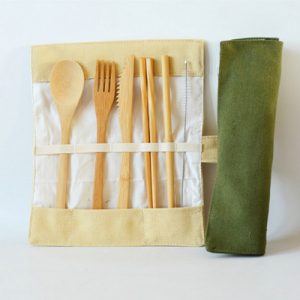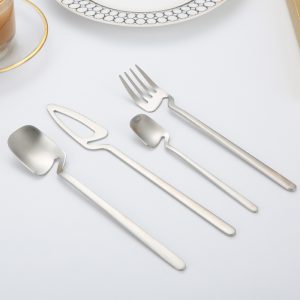Collecting antique flatware pieces can infuse your dining experience with a sense of history, nostalgia, and unique charm. Here’s a guide to collecting antique flatware and embracing its vintage allure:
- Research and Educate Yourself:
- Before you start collecting, learn about different styles, eras, and materials of antique flatware.
- Familiarize yourself with the marks, hallmarks, and signatures that indicate the maker, origin, and age of each piece.
- Visit Antique Shops and Flea Markets:
- Explore local antique shops, flea markets, estate sales, and online platforms specializing in antiques.
- Physically inspect the pieces, feel their weight, and assess their condition before purchasing.
- Identify Your Preferences:
- Determine the style or era you’re most drawn to. Antique flatware can span Victorian, Art Nouveau, Art Deco, Mid-Century Modern, and more.
- Consider Materials:
- Antique flatware can be made from various materials, including sterling silver, silver-plated brass, pewter, and even early stainless steel.
- Decide whether you prefer the elegance of silver or the rustic charm of pewter.
- Inspect for Quality and Condition:
- Look for flatware with minimal wear, scratches, or dents.
- Check for tarnish or discoloration, which may be reversible with proper cleaning.
- Collecting Sets or Individual Pieces:
- Decide if you want to collect complete sets or mix and match individual pieces to create an eclectic table setting.
- Care and Maintenance:
- Antique flatware requires gentle cleaning to preserve its patina. Use specialized silver polish for silver pieces and gentle cleaners for other materials.
- Handle antique flatware with care to avoid bending or damaging delicate pieces.
- Use Them:
- Incorporate your antique flatware into your dining experiences. Using them occasionally can be a beautiful way to appreciate their history.
- Displaying Your Collection:
- Showcase your antique flatware by arranging them in a display case, on a vintage tray, or in a shadow box.
- Rotate pieces regularly to enjoy different pieces.
- Storytelling and History:
- Research the history of specific patterns or manufacturers. Sharing these stories with guests can make your dining experiences even more special.
- Connecting with Other Collectors:
- Join online forums or local collector groups to connect with others who share your passion for antique flatware.
- Budgeting:
- Set a budget for your collection to ensure you’re making informed decisions about your purchases.
Remember that collecting antique flatware is not just about acquiring items, but about appreciating the craftsmanship, history, and stories behind each piece. As you gather these unique utensils, you’re preserving a piece of the past and adding a touch of vintage charm to your dining table.
















